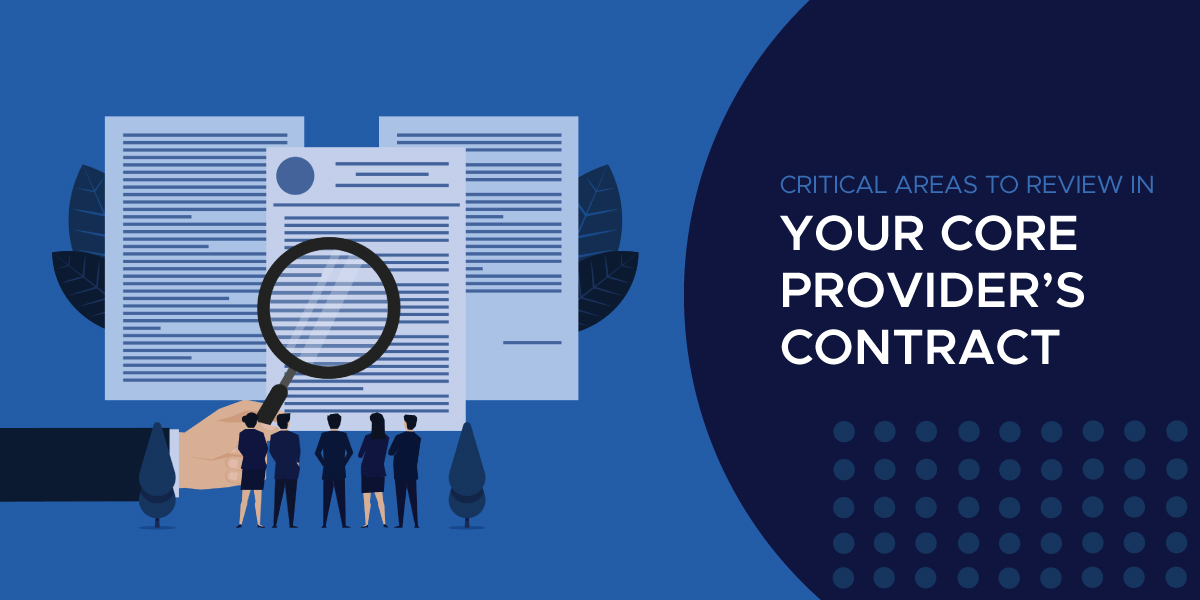Vendor management is the process of overseeing third-party service providers who work for your organization, from beginning to end. In this article I will introduce each phase of the vendor relationship and what activities happen during each, so you can more effectively manage your vendors.
Phase 1: Decide to Outsource
The most important question before taking on a vendor is, “Do we want a vendor for this service?” This is where you define what exactly you need the vendor to do and why it would be better to let a vendor do it than try to do it yourself. These are the “business requirements.” Getting clarification on these requirements should make it easier to determine if getting a vendor is the right move.
Once you’re sure getting a vendor is the right move, the next important question is, “What risk will our bank take on if we outsource this service?” I suggest you consider strategic, operational, transaction, credit, compliance and legal, and reputation risk. See your federal agency guidance for the types of risk they recommend you consider and check out Tandem’s article on How to Perform a Vendor Risk Assessment in Three Steps. This process will keep you aware of what risks you are taking on.
Phase 2: Pick a Vendor
Now the fun part, vendor shopping! Do internet searches, ask trusted colleagues, and visit reputable forums to create a pool of potential vendors. Determine if the prospective vendors will meet your service needs and business requirements. This process is often known as RFP, request for proposal. An important part of the selection process is something you do both before and throughout your relationship with a vendor, and that is due diligence. Due diligence is a process of gathering and reviewing documentation from the vendor to validate they are, and will continue to, meet your business needs. Do not get into a contract with a vendor until you have validated their assurances with due diligence. Be careful to not just let this be a compliance step. Properly review the documents and see what they tell you about the vendor’s security, stability, and resilience.
If you aren’t sure where to get started, here are three document review templates that can help:
With all your data in hand, ask yourself, "Which of these vendors best meets the banks business requirements?" Then, make your pick!
Phase 3: Come to an Agreement
Before you can start receiving the vendor’s services, carefully review the contract and ask, “Does the agreement address what we need?” Sometimes this means including legal counsel in the process. Some aspects of the arrangement may be impossible to change once the contract is signed, so pay special attention to things like scope, requirements, expectations, and service level agreements.
Phase 4: Monitor Your Vendor
As the vendor manager, it is your responsibility to monitor and ensure they continue to meet business requirements. This means both watching for changes in the vendor, as well as changes in your bank’s needs.
To make it easy to monitor the vendor’s performance, rank the relationship (e.g., Critical, Significant, Insignificant, etc.), so you can focus your time on the most important vendors. You could even schedule some reminders based on ranking, so more important vendors get attention more often. Then, gather the same due diligence you needed during selection and make sure nothing has changed for the worse.
Now, how do you monitor your bank? Your company is going to grow and change, and sometimes that means your outsourcing needs will change, too. On some frequency of your choosing, review your business requirements for this outsourced service and ask, “Has anything in the requirements changed?” If so, update your documentation and ensure the vendor meets your updated needs.
Phase 5: Say Goodbye
All good things must come to an end, whether voluntarily or not. Before the time comes, it is important to ask, “Do you have a plan for a smooth separation?” This is called a "termination contingency plan." While this plan is for the end of the relationship, it is wise to have a plan in place even before you get into contract with the vendor. You will need plans for a cancellation clause, getting your data back, knowing what data remains with the vendor, and having an estimated time for this process.
How to Keep Up With It All
Vendor management has a lot of moving parts, but if you have a standardized method, the process becomes much easier. A good software solution can help you work more efficiently, and potentially (a personal goal of ours) more enjoyably. Yes, I’m suggesting you need to use a vendor to help you help yourself to manage your vendors. Check out our Vendor Management Software product, used and recommended by IBT Apps, to see how Tandem can help you manage your third parties. The web-based software includes tools for managing documentation and decision making of all the phases covered in this article, robust templates, an easy-to-follow structure, and a team of support specialists to ensure you’re successful!
Our friends at IBT Apps have been using Tandem for their own vendor management process and have shared their experience with us, "Using the Tandem Vendor Management software tool has improved our vendor management process by providing a risk-based approach that helps us determine timing of vendor reviews and gives us the ability to set reminders to keep us on track. It also helps us to organize documents in one place and provides standardized templates and reports that keep our reviews consistent." If you're looking to improve your vendor management process, having the right software, like Tandem, could be just what you need this year.





